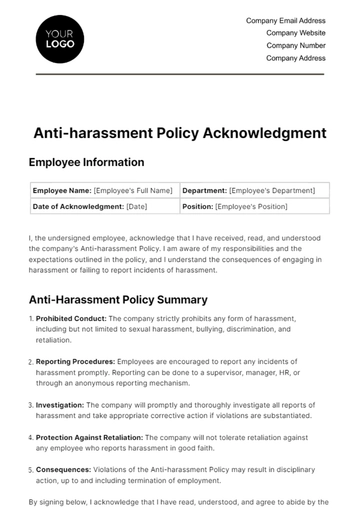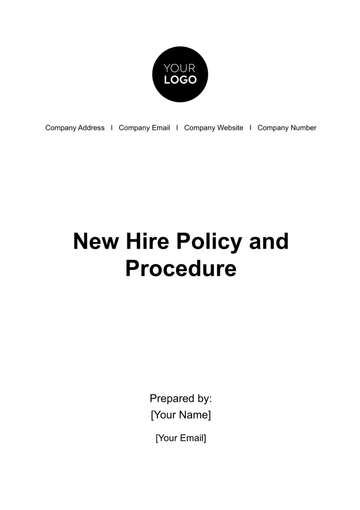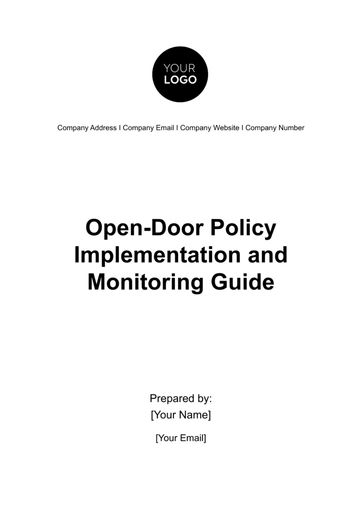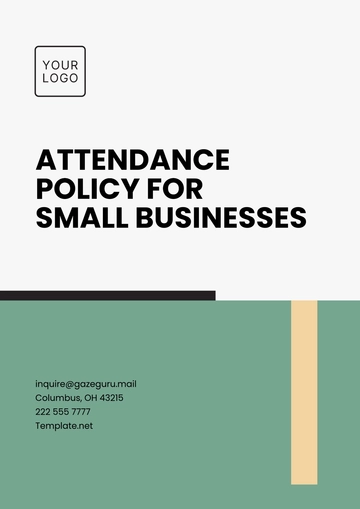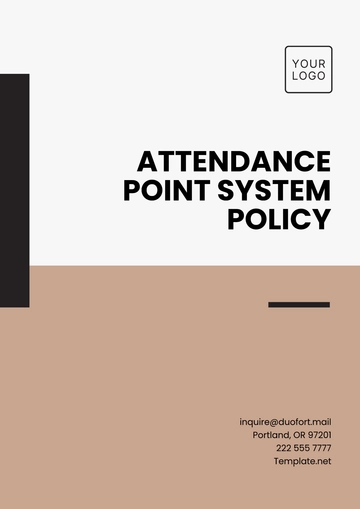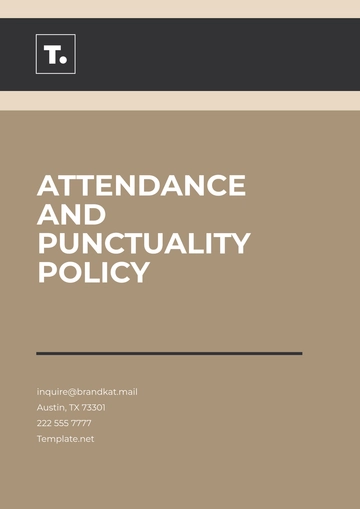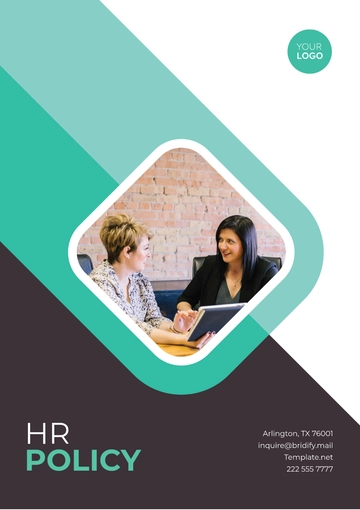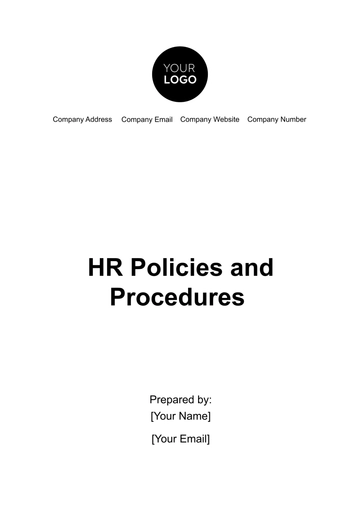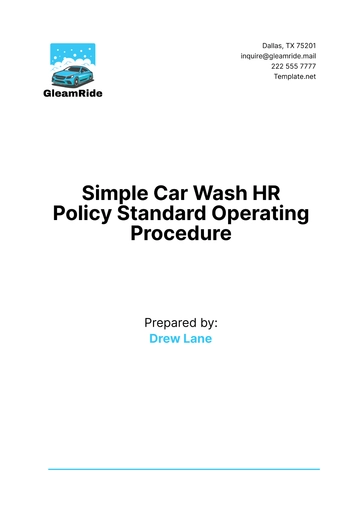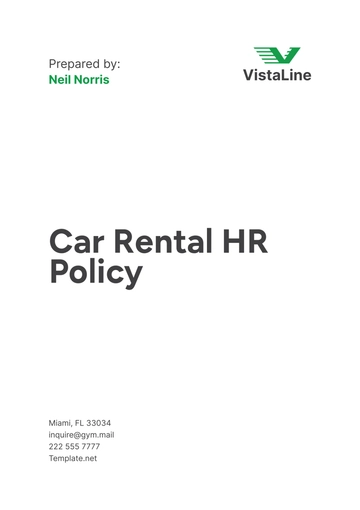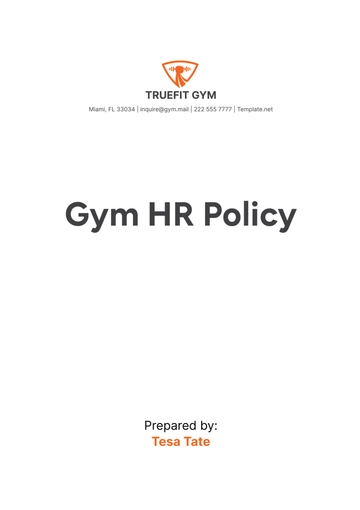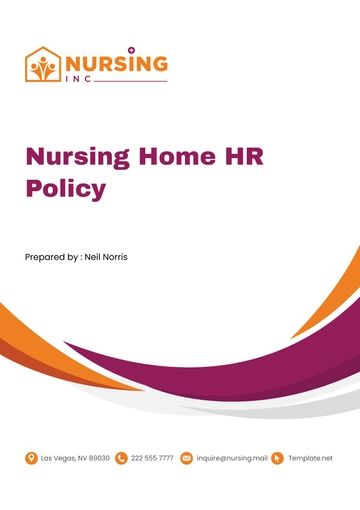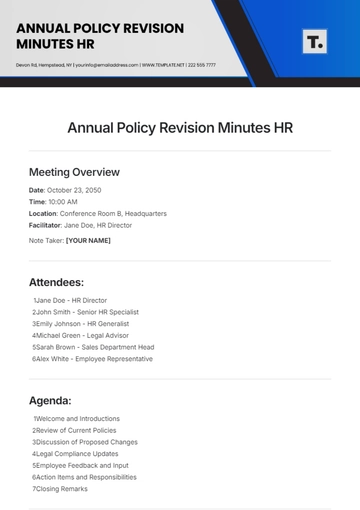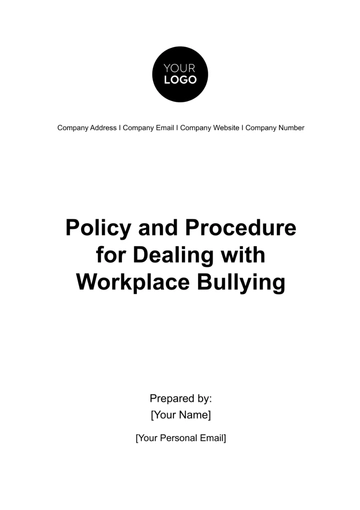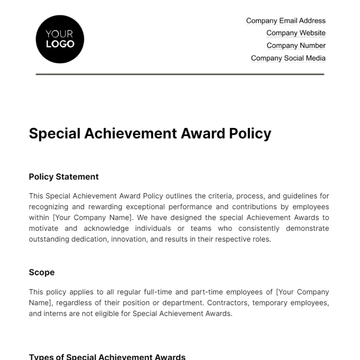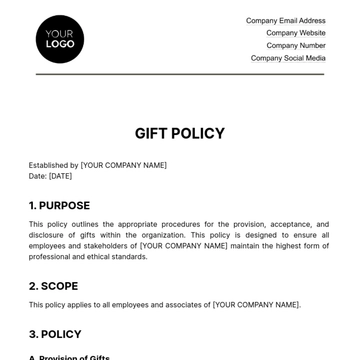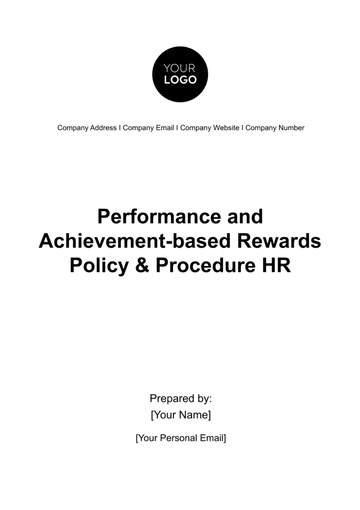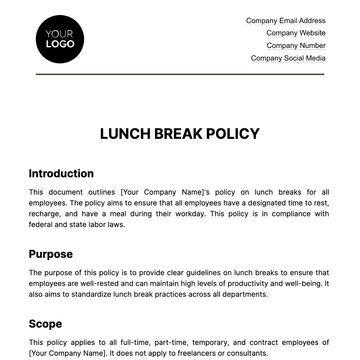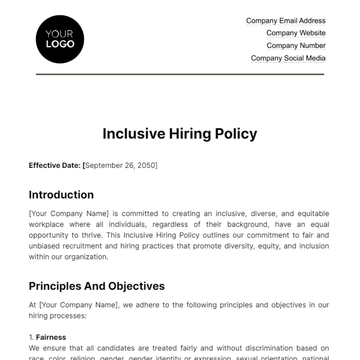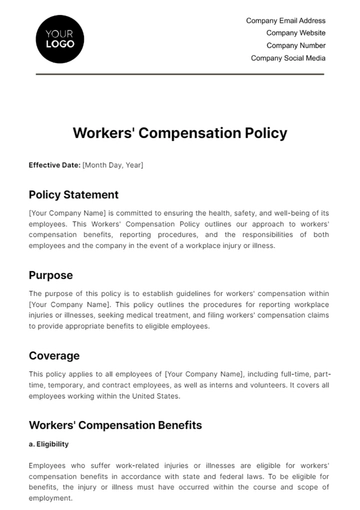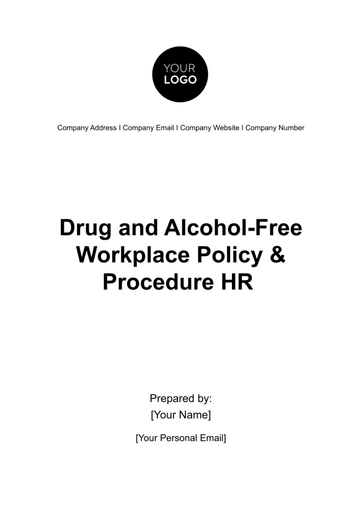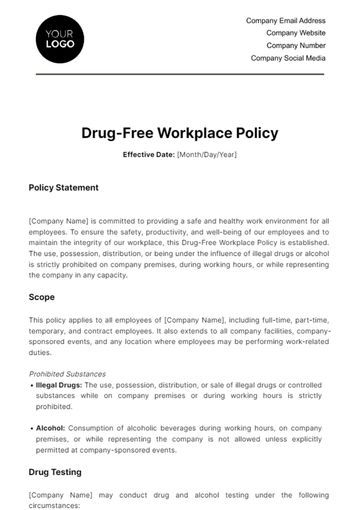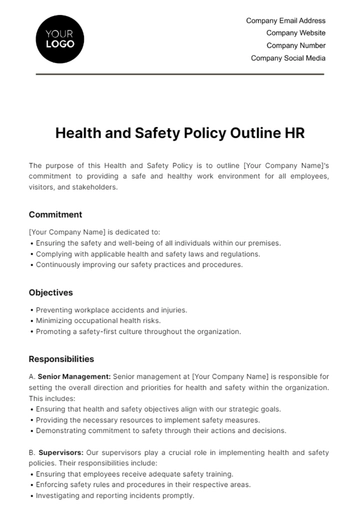Free Health and Safety Policy Outline HR

The purpose of this Health and Safety Policy is to outline [Your Company Name]'s commitment to providing a safe and healthy work environment for all employees, visitors, and stakeholders.
Commitment
[Your Company Name] is dedicated to:
Ensuring the safety and well-being of all individuals within our premises.
Complying with applicable health and safety laws and regulations.
Continuously improving our safety practices and procedures.
Objectives
Preventing workplace accidents and injuries.
Minimizing occupational health risks.
Promoting a safety-first culture throughout the organization.
Responsibilities
A. Senior Management: Senior management at [Your Company Name] is responsible for setting the overall direction and priorities for health and safety within the organization. This includes:
Ensuring that health and safety objectives align with our strategic goals.
Providing the necessary resources to implement safety measures.
Demonstrating commitment to safety through their actions and decisions.
B. Supervisors: Our supervisors play a crucial role in implementing health and safety policies. Their responsibilities include:
Ensuring that employees receive adequate safety training.
Enforcing safety rules and procedures in their respective areas.
Investigating and reporting incidents promptly.
C. All Employees: Every employee at [Your Company Name] is responsible for their own safety and the safety of their colleagues. This includes:
Complying with safety policies, procedures, and guidelines.
Reporting hazards, incidents, and near-misses promptly.
Participating in safety training and taking proactive steps to prevent accidents.
D. Health and Safety Committee: If a Health and Safety Committee exists within the company, its responsibilities may include:
Collaborating with management to identify safety needs.
Conducting regular safety inspections and audits.
Reviewing incident reports and recommending improvements.
Risk Assessment and Mitigation
A. Hazard Identification
Hazard identification involves a systematic process of identifying potential workplace hazards. At [Your Company Name], this process includes:
Regular workplace inspections and audits.
Employee reports of hazards or unsafe conditions.
Review of incident reports to identify root causes.
B. Risk Assessment
Risk assessment at [Your Company Name] involves a detailed evaluation of identified hazards. This includes:
Assessing the likelihood and severity of potential incidents.
Prioritizing risks based on their impact.
Collaborating with relevant stakeholders to make informed decisions.
C. Control Measures
To mitigate risks, we implement control measures designed to eliminate or reduce hazards. This includes:
Engineering controls (e.g., machine guards).
Administrative controls (e.g., work procedures).
Personal protective equipment (PPE) requirements.
Safety Training and Education
At [Your Company Name], training needs are identified through:
New employee orientation assessments.
Job hazard analysis.
Employee feedback and suggestions.
Regulatory compliance requirements.
A. Training Programs
We offer various safety training programs, including:
General safety training for all employees.
Job-specific safety training.
Specialized training for unique hazards.
B. Continuous Education
Our commitment to safety education extends to ongoing learning and skill development. We provide:
Regular refresher courses.
Access to resources and materials for self-paced learning.
Opportunities for employees to become safety ambassadors.
Incident Reporting and Investigation
A. Reporting Procedures
Reporting incidents at [Your Company Name] is essential for timely response and prevention. Our reporting procedures include:
Encouraging immediate reporting of all incidents, injuries, and near-misses.
Providing clear reporting channels and methods.
Ensuring confidentiality and non-retaliation for reporting.
B. Corrective Actions
Following investigations, we determine corrective actions, which may include:
Implementing immediate corrective measures to address hazards.
Developing preventive actions to avoid similar incidents.
Communicating findings and actions to all affected parties.
Compliance with Laws and Regulations
[Your Company Name] is committed to complying with health and safety laws by:
Staying informed about legal requirements.
Conducting regular assessments to ensure compliance.
Collaborating with relevant authorities for guidance.
A. Regulatory Updates
We stay up-to-date on changes in regulations by:
Subscribing to regulatory updates and alerts.
Participating in industry associations and forums.
Training employees on new regulatory requirements when they arise.
B. Policy Review and Updates
To ensure the policy's effectiveness, it is reviewed:
Documenting revisions and changes.
Communicating updates to all employees.
Training employees on policy changes when necessary.
- 100% Customizable, free editor
- Access 1 Million+ Templates, photo’s & graphics
- Download or share as a template
- Click and replace photos, graphics, text, backgrounds
- Resize, crop, AI write & more
- Access advanced editor
Promote a safe and healthy workplace with our Health and Safety Policy Outline HR Template exclusively from Template.net. This comprehensive resource empowers HR professionals to create policy outlines that highlight the organization's commitment to employee health and safety. Establish clear guidelines and expectations for safety practices with this customizable template that can be editable using our Ai Editor Tool.
You may also like
- HR Policy
- Restaurant Policy
- Company Policy
- Accounting Policies and Procedures
- Website Policy
- Privacy Policy
- Safety Policy
- School Policy
- IT and Software Policy
- Law Firm Policy
- Construction Policy
- Interior Design Policy
- Travel Agency Policy
- Education Academic Policy
- Security Policy
- Real Estate Policy
- Expense Policy
- Software Policy
